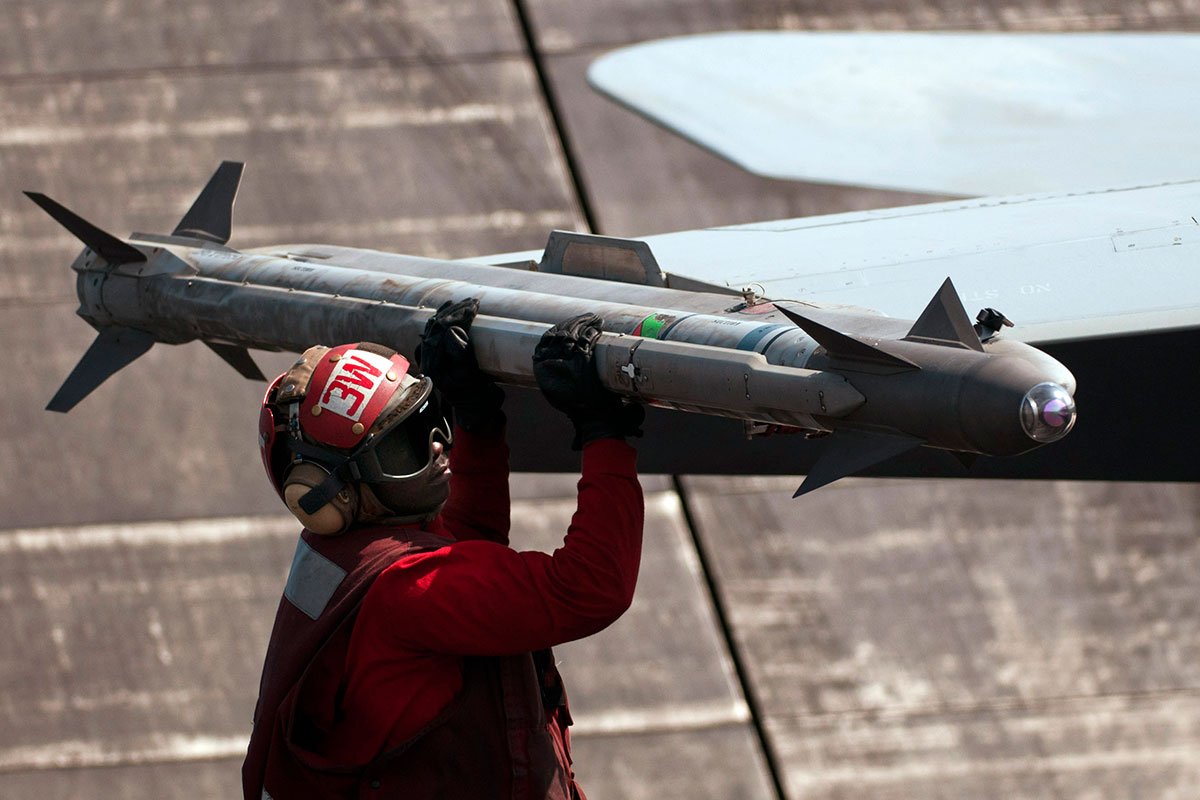
The AIM-9X Sidewinder missile knocked down the first, purported Chinese surveillance balloon off the coast of South Carolina, as well as targets over Alaska, Michigan, and Canada. As questions remain about the balloon and three other mysterious objects shot down by the US in recent days, one thing is sure: the armament used to knock them out of the sky.
AIM-9X Sidewinder: Who creates and uses them?
The missile is manufactured by Raytheon Technologies Corp. and is part of a larger class of weaponry that has been in the US arsenal for decades. While the missiles are primarily produced for the US military, they are also supplied in considerable quantities to a variety of American allies. Raytheon claims 31 foreign military sales partners, with South Korea, the United Arab Emirates, and Indonesia among those that have purchased the missile.
The latest AIM-9X version, designed primarily as an air-to-air missile, may also be employed from the ground and against land-based targets. It can be used in various current aircraft, including the F-16 Fighting Falcon and the F-22 Raptor.
Because of its adaptability, it has broken records by assisting the sophisticated F-22 fighter plane in scoring its first air-to-air kill. The United States does not reveal the actual quantity of such missiles in its arsenal, but it is anticipated to be substantial, with the US Air Force getting its 10,000th such missile in 2021.
What is the purpose of using them to shoot down UFOs?
According to Iain Boyd, Director of the Center for National Security Initiatives at the University of Colorado, using a missile reduces the risk to the pilot of the jet fighter by allowing them to stay at a considerably greater distance from the target. “It would have to go much closer to the target to use a cannon and there have been reports of the aircraft sensors being interfered with,” he said.
While the Sidewinder was not designed for shooting down flying objects like balloons, they’re cheaper and less likely to destroy loads on the flying object that officers want to recover, unlike a radar-guided armament like the AIM- 120 AMRAAM medium-range bullet, said retired US Air Force, Colonel Michael Pietrucha. Their heat-seeking capacities may also make them more well-suited for doing so, he said.” You’ve got two conditions. In the daytime, you have the sun heating the balloon — you’re shooting from up-sun because it sees this giant sunlight reflection and will absolutely guide on that. And at night the balloon is warmer compared to the night sky,” said the former irregular warfare operations officer and electronic warfare educator who flew 156 combat operations in F- 4G and F- 15E spurts.
Even if the flying object does not generate heat, the missile will still be able to find it as “it’s the relationship to the background that matters more,” Pietrucha added. “The way you shot down balloons back in the day was incendiary ammunition against a hydrogen balloon. But that was 100-plus years ago.”
What are their prices?
The US Department of Defense wants to buy 255 of the missiles for $111.9 million in the fiscal year 2023. That works up to $439,000 per person. However, large reductions are involved, and other countries will likely be required to pay for accompanying equipment, parts, and training costs as well. Malaysia, for example, intended to acquire only 20 AIM-9X-2 missiles for an estimated $52 million in 2011, after factoring in such additional expenses.
How do they function?
The AIM-9X Sidewinder is a supersonic, heat-seeking missile with a short range. An infrared homing guidance section, an active optical target detector, a high-explosive warhead, and a rocket motor are among its key components.
The infrared, in particular, enables the missile to zero in on targets in a variety of environments at any time of day. The 186-pound (84 kg) apparatus runs on solid fuel and is 9.9 feet in length (3 meters). The missile’s Block II variant has improved capabilities such as a lock-on-after-launch capability, which eliminates the need for the pilot to rely solely on visual aiming.
When a pilot points an AIM-9X, the heads-up display shows a circle on the target and a “growl” in the headset, according to veteran US AirForce fighter pilot Pietrucha: “If you get a good growl, you’re locked.” The person firing the missile will have a feedback loop that will allow them to evaluate the quality of the shot.
What is their background?
The US military has a long history with Sidewinder missiles. They were developed by the US Navy in the 1950s before being adopted by the US Air Force. It was the first operational heat-seeking guided missile. Early variations were only effective at close range and could not be utilized at night. However, further advancements made it an ideal weapon for a wide range of situations, and a later version of the missile was employed during the Vietnam War.
According to Boyd of the University of Colorado, the missile is the most widely distributed air-to-air missile in the West, with over 100,000 in circulation. The Sidewinder’s latest incarnation, the AIM-9X, entered service in 2003.


